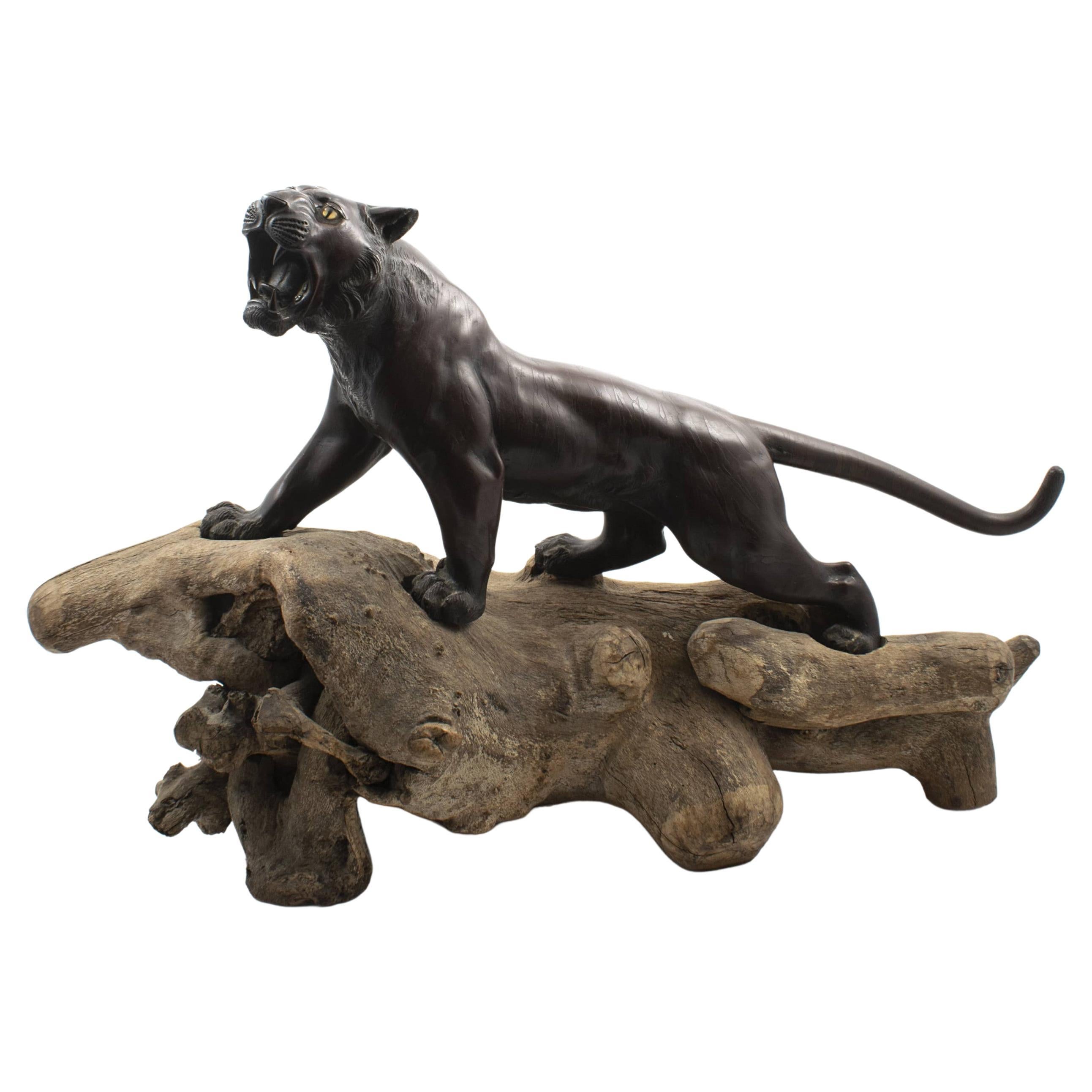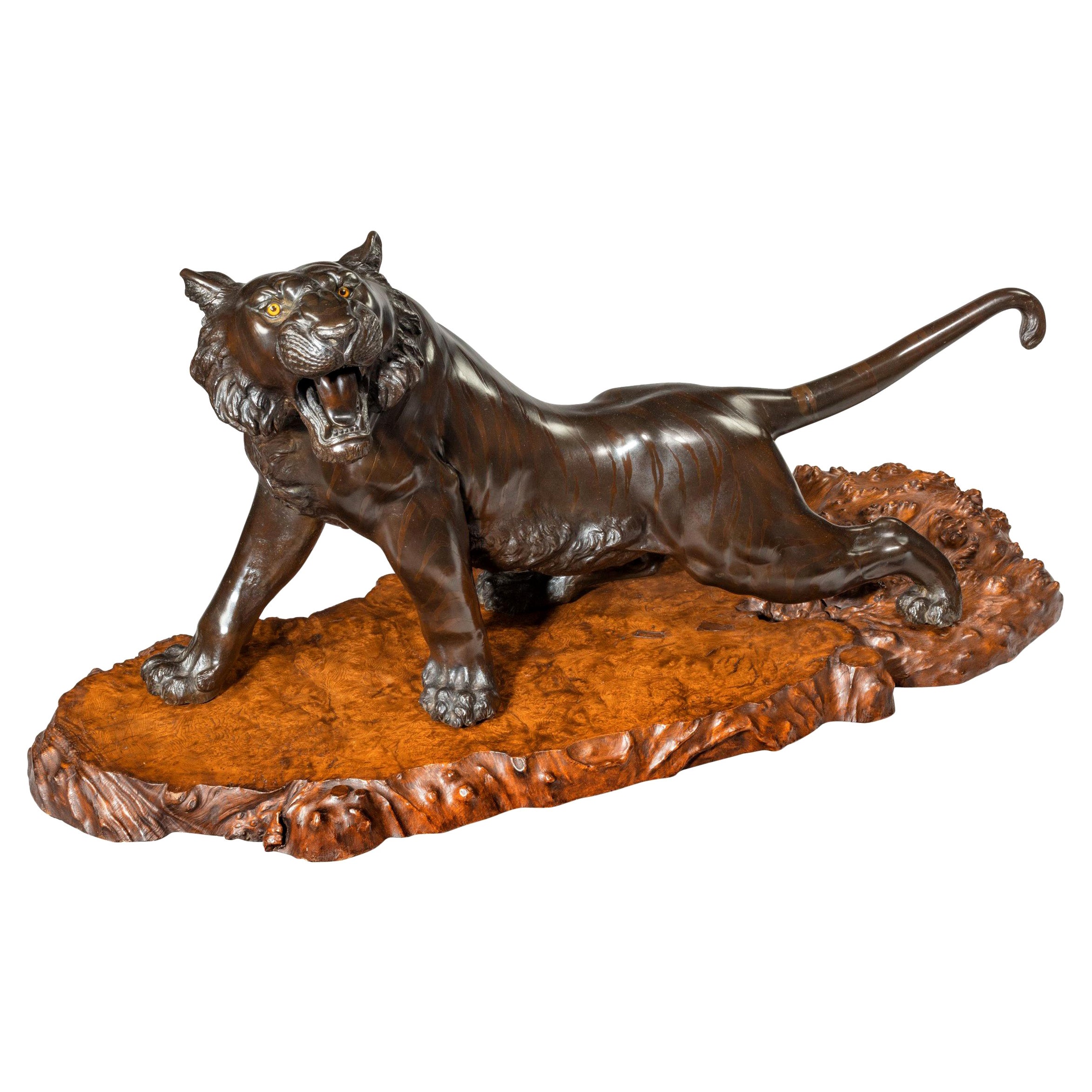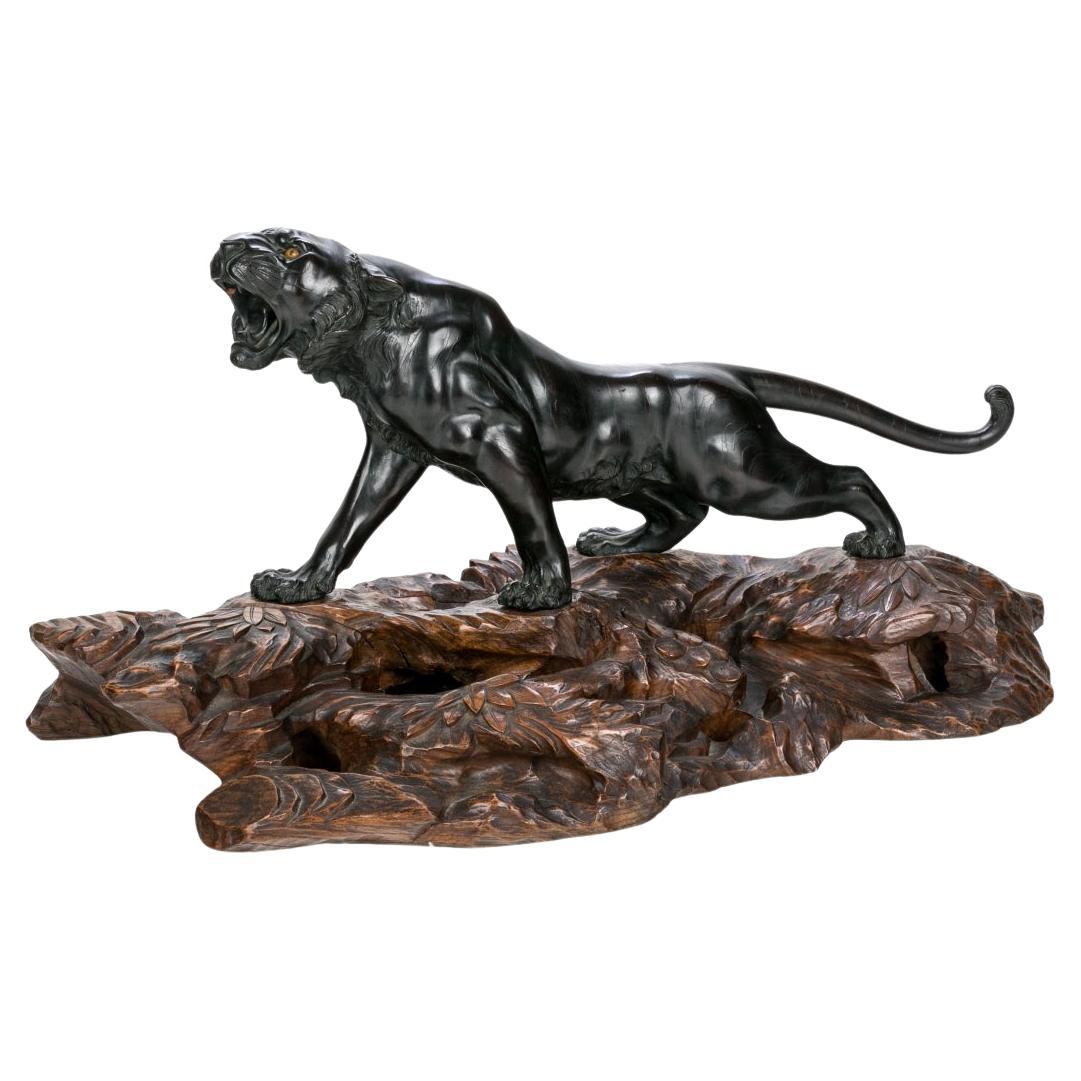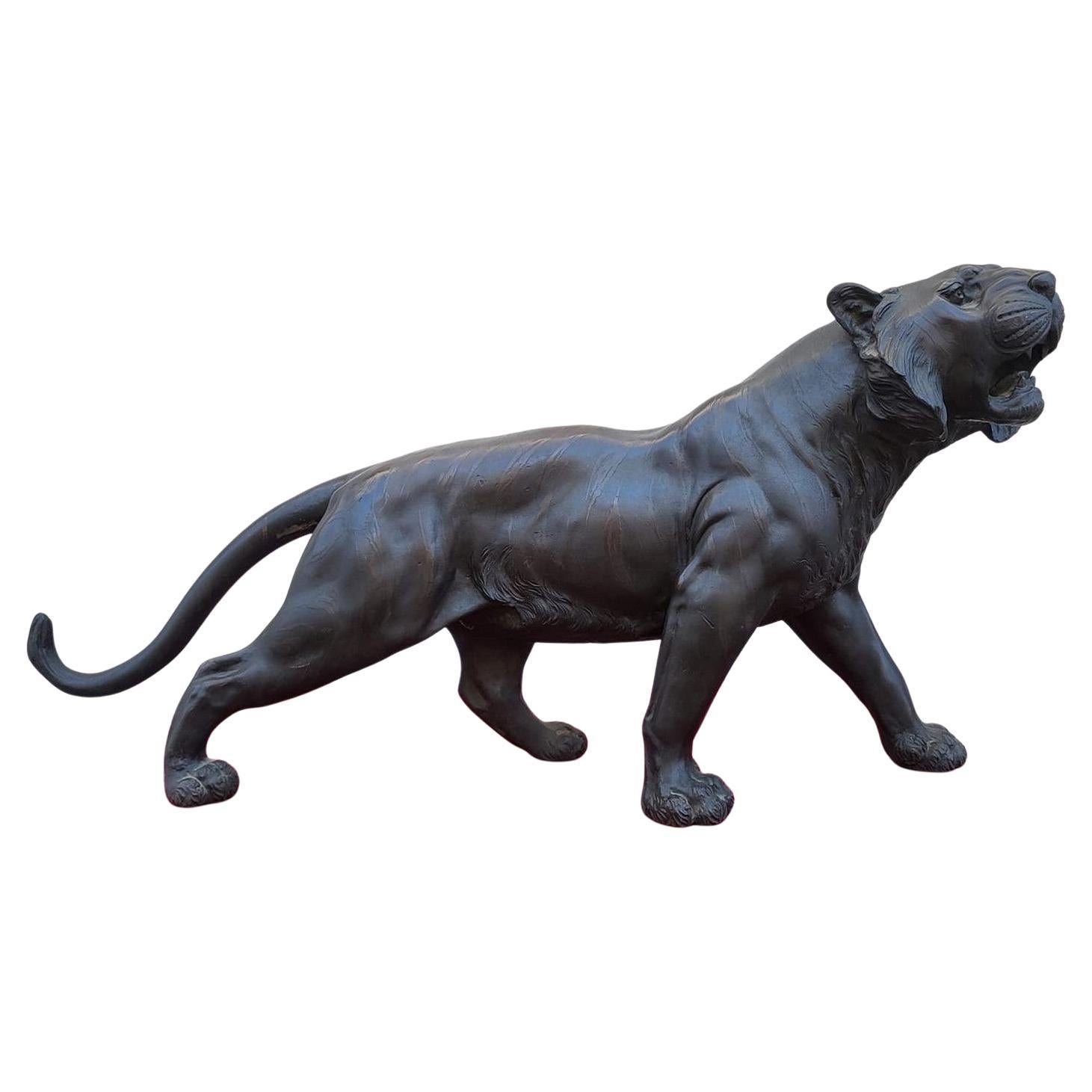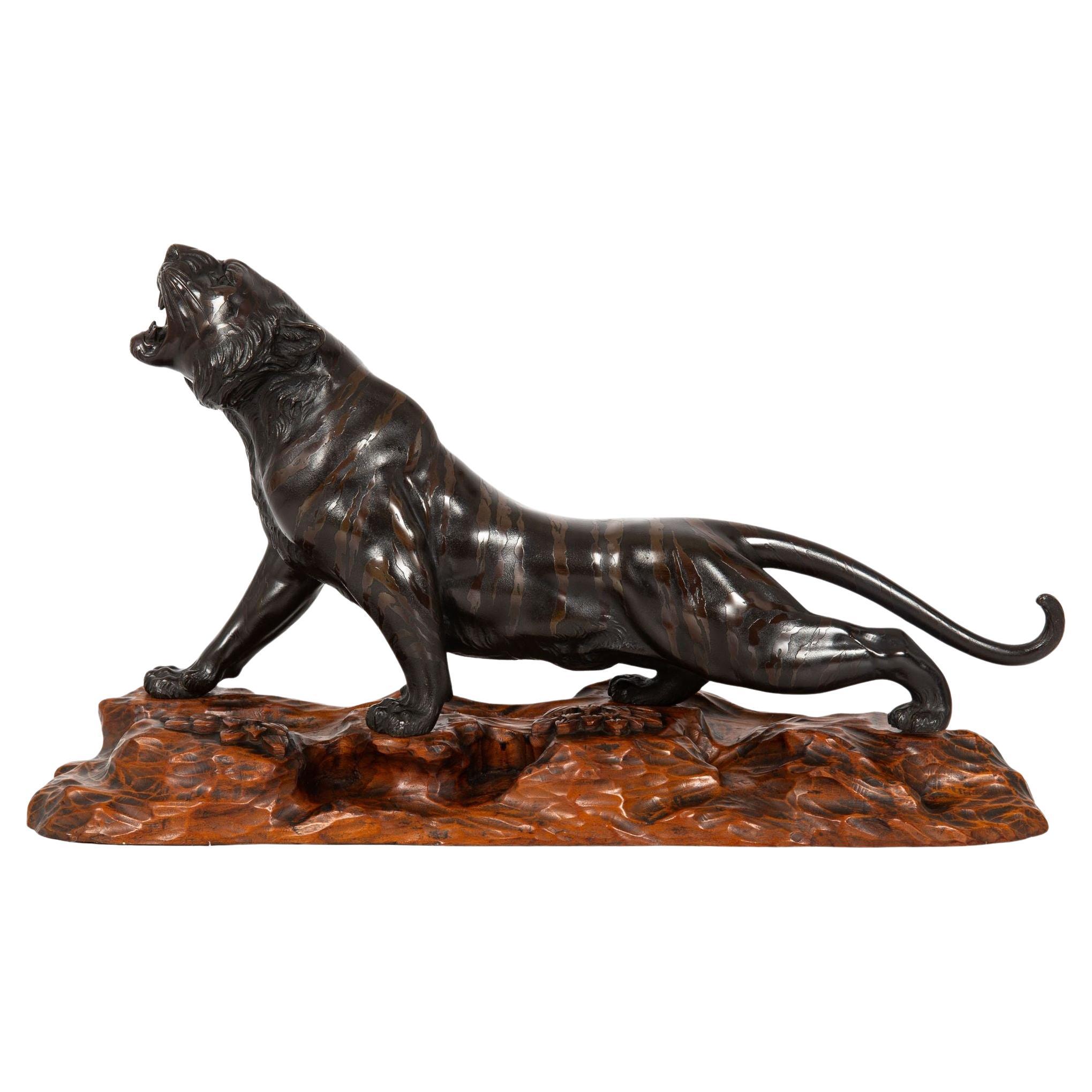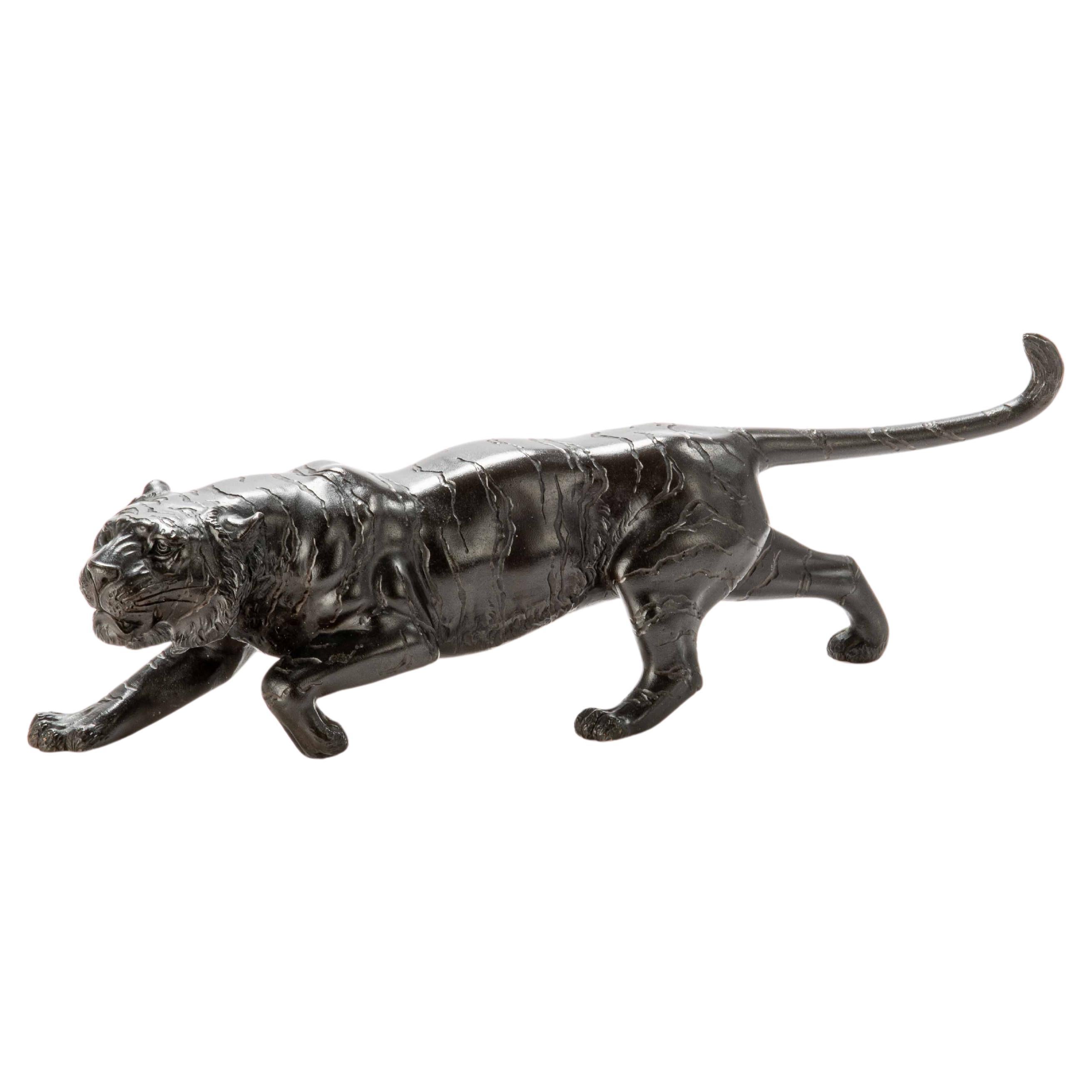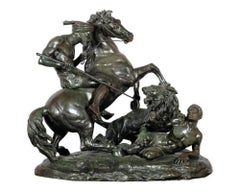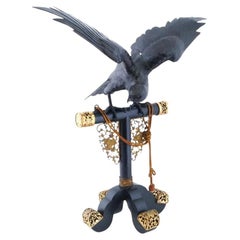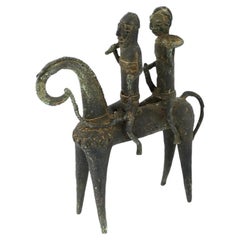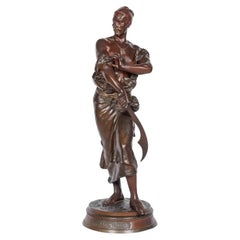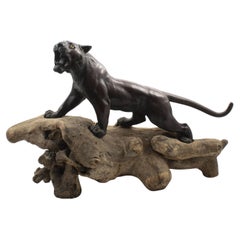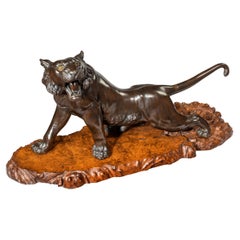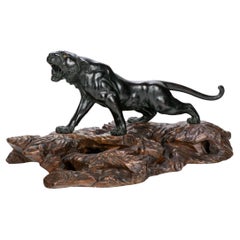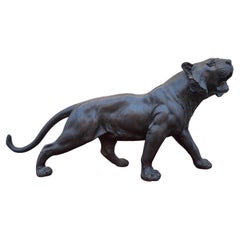Items Similar to A Massive Japanese Patinated Bronze Sculpture of a Tiger, Meiji Period
Want more images or videos?
Request additional images or videos from the seller
1 of 10
A Massive Japanese Patinated Bronze Sculpture of a Tiger, Meiji Period
$8,750
$12,50030% Off
£6,639.30
£9,484.7130% Off
€7,591.44
€10,844.9230% Off
CA$12,221.38
CA$17,459.1130% Off
A$13,588.51
A$19,412.1630% Off
CHF 7,095.17
CHF 10,135.9630% Off
MX$165,405.24
MX$236,293.2030% Off
NOK 90,531.27
NOK 129,330.3930% Off
SEK 84,823.48
SEK 121,176.4030% Off
DKK 56,656.35
DKK 80,937.6430% Off
Shipping
Retrieving quote...The 1stDibs Promise:
Authenticity Guarantee,
Money-Back Guarantee,
24-Hour Cancellation
About the Item
A Massive Japanese Patinated Bronze Sculpture of a Tiger, Meiji Period. Signed.
Measuring an impressive 44 inches in length, this extraordinary sculpture is a striking example of the grandeur and craftsmanship characteristic of the Meiji era (1868–1912). Most certainly one of the largest models of its kind, this sculpture exudes power and grace, capturing the essence of the tiger with remarkable realism and dynamic posture.
The meticulously detailed musculature, fierce expression, and finely textured fur showcase the superior artistry of Japanese metalwork. The rich patina adds depth and dimension, enhancing its lifelike appearance.
This sculpture is not just a captivating work of art but also a testament to the skill and dedication of Meiji-period artisans, making it an exceptional acquisition for collectors of fine Asian antiques and animalier bronzes.
Signed on the bottom by artist with Japanese seal.
15″ high x 44″ wide x 18″ deep
Very good condition, normal wear consistent with age and use. Ready to place.
- Dimensions:Height: 15 in (38.1 cm)Width: 44 in (111.76 cm)Depth: 18 in (45.72 cm)
- Style:Meiji (Of the Period)
- Materials and Techniques:
- Place of Origin:
- Period:
- Date of Manufacture:19th Century
- Condition:Wear consistent with age and use.
- Seller Location:Long Island City, NY
- Reference Number:1stDibs: LU7386244418842
About the Seller
4.9
Platinum Seller
Premium sellers with a 4.7+ rating and 24-hour response times
1stDibs seller since 2022
96 sales on 1stDibs
Typical response time: <1 hour
- ShippingRetrieving quote...Shipping from: Long Island City, NY
- Return Policy
Authenticity Guarantee
In the unlikely event there’s an issue with an item’s authenticity, contact us within 1 year for a full refund. DetailsMoney-Back Guarantee
If your item is not as described, is damaged in transit, or does not arrive, contact us within 7 days for a full refund. Details24-Hour Cancellation
You have a 24-hour grace period in which to reconsider your purchase, with no questions asked.Vetted Professional Sellers
Our world-class sellers must adhere to strict standards for service and quality, maintaining the integrity of our listings.Price-Match Guarantee
If you find that a seller listed the same item for a lower price elsewhere, we’ll match it.Trusted Global Delivery
Our best-in-class carrier network provides specialized shipping options worldwide, including custom delivery.More From This Seller
View AllLa Chasse Au Lion, The Lion Hunt, Monumental Bronze Sculpture after Aime Millet
By Aimé Millet
Located in Long Island City, NY
“La Chasse Au Lion”, “The Lion Hunt”, A Monumental French Orientalist Bronze Sculpture after Aime Millet (1818–1891), circa late 19th century.
This bronze sculpture of The Lion Hun...
Category
Antique Late 19th Century French Louis XVI Animal Sculptures
Materials
Bronze
A Large Japanese Meiji Bronze Eagle with Bronze Tokugawa Mon Base
Located in Long Island City, NY
An antique Japanese Meiji era bronze eagle on a perch. The eagle, with its head lowered and wings outspread, reflects the dynamic energy and alertness characteristic of these majestic birds. The detailing, likely down to the feathers and talons, showcases the skill of the Meiji era bronze artisans, known for their precision and attention to naturalistic forms. The tasseled bronze stand with gilt mounts not only provides a stable perch for the eagle but also adds a touch of elegance and ornate detailing.
Circa the early 19th century.
Antique Japanese Bronze Bird Sculptures...
Category
Antique Early 19th Century Japanese Animal Sculptures
Materials
Bronze
$7,800 Sale Price
35% Off
Antique African Bronze Sao Cavalier Statue
By Larry Mohr
Located in Long Island City, NY
An antique African bronze Sao Cavalier statue, Chad. Depicts two warriors on horseback. The men hold spears and a shield, and the horse has tribal dec...
Category
Antique 19th Century Unknown Figurative Sculptures
Materials
Bronze
$5,250 Sale Price
30% Off
Le Garde Du Harem, A Monumental Orientalist Bronze Sculpture by G. Coudray C. 18
By Georges Charles Coudray
Located in Long Island City, NY
Le Garde Du Harem, "The Harem Guard" A Monumental Orientalist Patinated Bronze Sculpture by Georges Charles Coudray (French, 1862-1932)
Le Garde Du Harem, "The Harem Guard Carryin...
Category
Antique 19th Century French Sculptures and Carvings
Materials
Bronze
Bill Huebbe 1991 Composite Lion Sculpture Card Stand
By Bill Huebbe
Located in Long Island City, NY
Bill Huebbe, 1929 to 2013, a composite sculpture, crafted in 1991, portrays a lion with an exaggerated long neck holding a tray. This statue serves a dual purpose as it can be utiliz...
Category
20th Century Unknown Animal Sculptures
Materials
Bronze
$500 Sale Price / set
50% Off
Large Sterling Silver 925 Clad Double Horse Sculpture
Located in Long Island City, NY
925 Clad Horse Sculpture. Overall size is 17 1/2"h x 19 1/2"w x 16 1/2"d. Condition: some scratches, otherwise perfect…
This large sterling silver 925 clad double horse sculpture ...
Category
Antique 19th Century Unknown Sculptures and Carvings
Materials
Sterling Silver
You May Also Like
Large Japanese Tiger in Patinated Bronze, Signed. MEIJI / TAISHO
By Kosai Taisho
Located in Kastrup, DK
Japanese tiger in reddish brown patinated bronze with glass eyes.
Signed.
Made in very high quality on original plinth root wood.
Meiji period 1852-1...
Category
Early 20th Century Japanese Meiji Animal Sculptures
Materials
Bronze
Large Meiji Period Bronze Tiger by Genryusai Seiya
Located in Lymington, Hampshire
Large Meiji period bronze tiger by Genryusai Seiya, striding forward with teeth bared, the bronze patinated to imitate tiger stripes, with in...
Category
Antique 1880s Japanese Animal Sculptures
Materials
Bronze
Exquisite Japanese Copper Tiger On Carved Wood Stand
Located in Bridgeport, CT
A very fine Japanese cast Copper Tiger in a rich deep brown patina in defensive pose with open snarling mouth and rampant tail. Details include yellow glass eye (one missing), fine S...
Category
20th Century Asian Meiji Metalwork
Materials
Copper
Tiger, Japanese Bronze, Meiji Era, XIXth Century
Located in MARSEILLE, FR
Large bronze tiger with brown patina, with very subtle bronze work to bring out the stripes on the body of the tiger
No mark or signature
Japan wo...
Category
Antique 19th Century Japanese Japonisme Animal Sculptures
Materials
Bronze
Fine Japanese Meiji Bronze Okimono Sculpture of Tiger by Mitani
Located in Shippensburg, PA
An exceedingly fine Japanese bronze okimono of a Roaring Tiger from the Meiji period, it exhibits the finest chiseling and articulating of detail. The sleek beast is cast in a way th...
Category
Antique 19th Century Japanese Meiji Animal Sculptures
Materials
Bronze
A Japanese bronze okimono depicting the study of a tiger
Located in Milano, IT
Bronze okimono depicting the study of a powerful tiger in a furtive position.
The animal is represented with its legs bent, its tail curled upwards and its body in a lowered positio...
Category
Antique Late 19th Century Japanese Japonisme Metalwork
Materials
Bronze
$1,726 Sale Price
28% Off
More Ways To Browse
Patinated Bronze Sculpture
Bronze Seal
Asian Tiger
Japanese Bronze Sculptures
Asian Tiger Art
Animalier Bronze
Bronze Sculpture Seal
Tiger Sculptures
Bronze Tiger
Japanese Tiger
Meiji Bronze Sculptures
Antique Bronze Tiger
Tiger Carving
Tiger Fur
Meiji Tiger
Japanese Bronze Tiger
Meiji Bronze Tiger
Lotus Flower Sculpture
